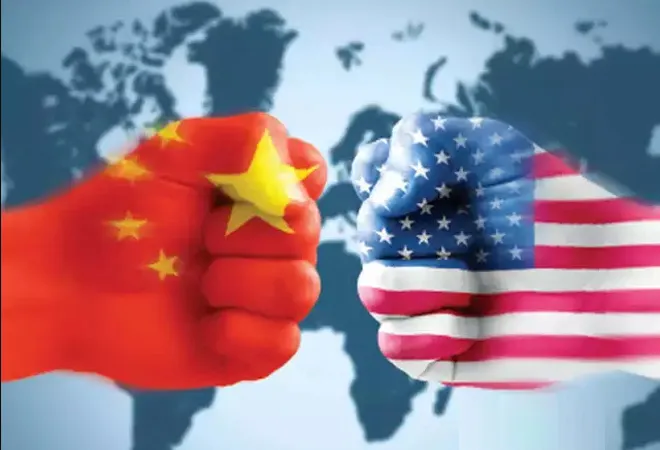Last week marked the first anniversary of the CHIPS and Science Act 2022 ushered by the Joe Biden administration to advance US' competitive edge vis-a-vis China, strengthen supply chains and protect national security. The predominant reason for the US to bring in this legislation last year was to arrest its rapidly ceding space in the semiconductor manufacturing sector to China. As China consolidated its position in the sector as a chip manufacturing hub, the US slipped from producing nearly 40 percent of the world’s chips to just over 10 percent in the last three decades. As such, this Act sought to change the comparative advantage by allocating $53 billion towards the enhancement of US semiconductor manufacturing, research and development, and the augmentation of its skilled workforce in the domain. To mark this anniversary and further consolidate gains in chip manufacturing, the Biden administration signed a new executive order earlier this month on August 9:
Addressing United States Investments In Certain National Security Technologies And Products In Countries Of Concern.
The predominant reason for the US to bring in this legislation last year was to arrest its rapidly ceding space in the semiconductor manufacturing sector to China.
National security concerns were front and centre for the Biden administration in its latest decision to curb US investments in certain technologies and products ‘in countries of concern’. The order identifies China along with Hong Kong and Macau as key threats in this regard. The provision empowers the US Secretary of Treasury to oversee specific American investments directed towards China that have raised apprehensions. This oversight particularly targets technologies in three domains: semiconductors and microelectronics; quantum information technologies; and artificial intelligence.
A pressing concern for the administration has been the necessity to fortify the high technology sector against potential vulnerabilities that could inadvertently facilitate investments reaching China. Despite robust efforts taken by the Biden administration last year, there remained gaps that allowed certain Chinese technologies to seep into the US high-tech domain, often indirectly through various investment routes, including other countries, manufacturing partners and channels. The legislative measures such as the CHIPS and Science Act of 2022 and the executive order curbing U.S. citizens' involvement in Chinese high technology sectors, were efforts to staunch these leaks. Nevertheless, these actions were deemed insufficient to completely eliminate the technological loopholes that were contributing to China's advancements indirectly. In this regard, the Biden administration’s ‘small-yard, high-fence’ approach emphasizes targeted and precise safeguarding of key high-tech assets. Ultimately, Washington’s evolving approach seeks to address the shortcomings in previous measures and establish a comprehensive safeguard against technology leaks in the high-end tech sector.
The legislative measures such as the CHIPS and Science Act of 2022 and the executive order curbing U.S. citizens' involvement in Chinese high technology sectors, were efforts to staunch these leaks.
The latest executive order does not go into effect immediately. The US Department of Treasury has sought public comment to be factored in before its implementation. Beyond national security motivations driven by the fact that unregulated US investments in key tech industries could benefit China’s military, the Biden administration is aware that the these moves could also significantly impact American companies. Already, the Semiconductor Industry Association (SIA) in Washington has urged a ‘vital’ market access in China, fearing the repercussions of the latest executive order. However, in the light of the latest move by the US, major Chinese internet companies have scrambled to stockpile chips to advance their AI objectives. Most recently, Chinese companies have placed a $5 billion purchase order comprising essential high-performance Nvidia chips used in the development of generative artificial intelligence systems.
One of the most potent ways in which a US-China rift can impact the rest of the world is through disruptions in the global value and supply chains. In order to avoid any major upsetting, the Biden administration has climbed down from its rhetoric of ‘decoupling’ to ‘derisking’ with China. Among the reasons for this realization has been the pragmatic difficulty to shift both the value chains and supply chain networks from China in the short to medium term. Even as those transitions might be underway, the US efforts will be moderated by the very nature of the three target domains under the latest executive order by the Biden administration and the dependencies they incorporate.
In what is one of the most intense phases of US-China rivalry, much of the hostility is likely to play out in the realm of the ongoing tech-war and its associated implications in cyber, space and military domains. Biden’s steps against China find a rare bipartisan consensus in the Capitol Hill. However, his administration will be torn by an industry lobby which finds these steps overbearing and restrictive on one hand, often steeped in concerns of economic losses, and the China hawks who think these steps may not be enough to halt Beijing’s rapid advances as Biden’s steps have left out key sectors like biotechnology and energy. As the political pitch in the US amplifies before national elections next year, Joe Biden as the president and the presidential nominee for the Democratic Party will look to confronting China as one of the main planks for his reelection bid in 2024.
This commentary originally appeared in Economic Times.
The views expressed above belong to the author(s). ORF research and analyses now available on Telegram! Click here to access our curated content — blogs, longforms and interviews.




 PREV
PREV



